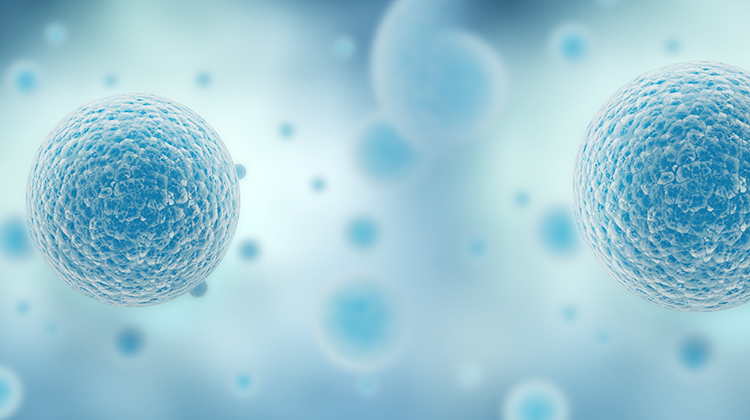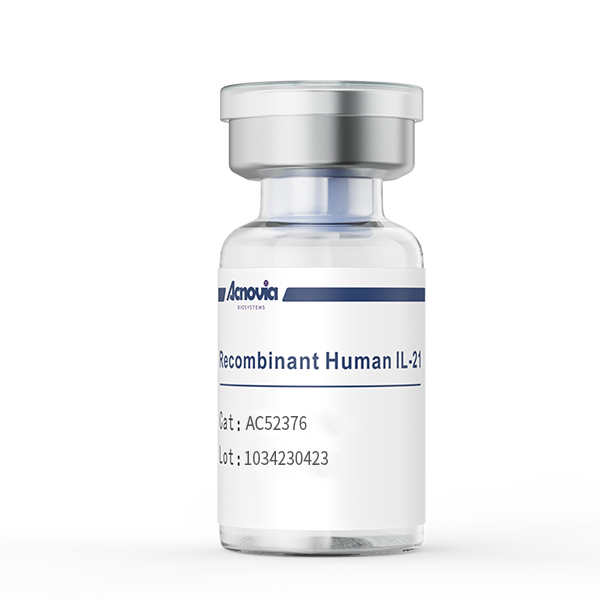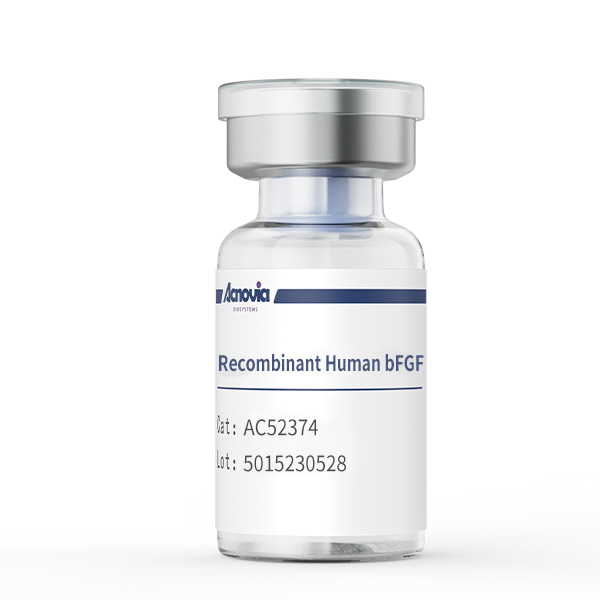
Catalog#/Size:AC52376/100 µg.
Source:Escherichia coli.
SDS-PAGE:17 kDa, reducing conditions.
Molecular Weight:Approximately 15.4 kDa, a single non-glycosylated polypeptide chain containing 132 amino acids.
-
100 μg
¥4380.00
现货 -
1 mg
¥23800.00
现货
Catalog#/Size:AC52376/100 µg.
Source: Escherichia coli.
Molecular Weight: Approximately 15.4 kDa, a single non-glycosylated polypeptide chain containing 132 amino acids.
Description: Accession # Q9HBE4,Gln32-Ser162 with a N-terminal Met.
SDS-PAGE: 17 kDa, reducing conditions.
Purity: > 95 %, as determined by SDS-PAGE, under reducing non-reducing conditions, visualized by coomassie staining.
Endotoxin: Less than 0.1 EU/µg of rHuIL-21 as determined by kinetic Limulus Amoebocyte Lysate (LAL) assay.
Biological Activity: Recombinant Human IL-21 Protein stimulates secretion of IFN-gamma by NK-92 human natural killer lymphoma cells, the EC50 for this effect is 0.02302 to 2.425 ng/mL.
Physical Appearance: Sterile Filtered White lyophilized (freeze-dried) powder.
Formulation: Lyophilized from a 0.2 µm filtered concentrated solution in 10 mM PBS, pH 7.5 without carrier protein or preservatives.
Reconstitution: We recommend that this vial be briefly centrifuged prior to opening to bring the contents to the bottom. Reconstitute to a concentration of 0.1-1.0 mg/mL in sterile distilled H2O. Stock solutions should be apportioned into working aliquots and stored at-20 ℃ to -70 ℃. Further dilutions should be made in appropriate buffered solutions. Do not reconstitute in cell culture media directly.
Shipping: The product is shipped at 2 °C to 8 ° C. Upon receipt, store it immediately at the temperature recommended below.
Stability & Storage: Use a manual defrost freezer and avoid repeated freeze-thaw cycles.
A minimum of 12 months from date of shipping when stored at -20℃ to -70℃ as supplied.
4 weeks at 2 ℃ to 8 ℃ under sterile conditions after reconstitution.
4 months at -20 ℃ to -70 ℃ under sterile conditions after reconstitution
Usage: Acnovia rHuIL-21 product can be used for a variety of ex vivo cell culture applications such as research or further manufacturing.
Quality statement: No animal- or human-derived materials were used for the manufacture of this product, unless otherwise stated in the respective Certificate of Origin.
IL-21 is a common member of the γ -chain family of cytokine receptors and is a cytokine of the four- α helix bundle type I. IL-21 is mainly secreted by activated CD4+ T cells, activated T follicular helper cells (Tfh), Th17 cells and NKT cells. The human IL-21 gene is mapped to 4q26-27 and encodes the IL-21 polypeptide precursor consisting of 162 amino acids. The mature protein of IL-21 is 133 amino acids (relative molecular mass of about 15 KDa). The human IL-21 coding gene is only about 180 kbp from the IL-2 coding gene, while IL-15 is located slightly further at 4q31. From the sequence analysis, IL-21 has 20% identity with IL-15, and the structure of the introns and exons of these two cytokines are very similar. Structurally, IL-21 has two pairs of cysteine residues in the same position as IL-15, one pair is conserved in IL-2, IL-4 and GM-CSF, and the other pair is unique to IL-15 and IL-21.
The receptor, —— IL-21 R, of IL-21, is a dimer containing the subunit γ shared by the receptor subunit, IL-21 R, and other members of this family. As a transmembrane protein, IL-21 Ra has an extracellular structure containing a cytokine binding domain with a conserved phenotype of WSXWS and a pair of paired cysteine residues and an intracellular structure with conserved Box1 and Box2 elements, which is important for the proliferation and differentiation of T cells, B cells and natural killer (NK) cells by transducing the growth-promoting signal of IL-21.
IL-21R is widely expressed in different immune cells including B, T, NK, and DC. After binding with IL-21 R, IL-21 can regulate the proliferation of B lymphocytes, and effectively promote the proliferation and differentiation of T cells and NK cells, playing an important role in immune regulation, anti-tumor and other fields. IL-21 can combine different types of immune cells and activate them, thus exerting different immunological effects: directly regulating the proliferation and apoptosis of B lymphocytes, promoting immunoglobulin production and conversion of the same type; enhancing the cytotoxicity of CD8+ T cells, natural killer cells and NKT cells; in addition, IL-21 signal in CD4+ T cells is necessary for Th17 differentiation and T follicular helper cell generation, which supports B lymphocyte differentiation and antibody generation. The addition of IL-21 during the culture of NK cells significantly increased the killing activity of NK cells.
Parrish-Novak J, Dillon SR, Nelson A, Hammond A, Sprecher C, Gross JA, Johnston J, Madden K, Xu W, West J. Interleukin 21 and its receptor are involved in NK cell expansion and regulation of lymphocyte function. Nature. 2000;408:57-63.
Habib T,Senadheera S,Weinberg K,et al.The common gamma chain(gamma c) is a required signaling component of the IL-21 receptor and supports IL-21-induced cell proliferation via JAK3.Biochemistry,2002,41(27):8725-8731.
H.Søndergaard & K. Skak. IL-21: roles in immunopathology and cancer therapy. Immunopharmacology 2009.





 CN
CN









 细胞治疗
细胞治疗
 基因治疗
基因治疗
 mRNA治疗
mRNA治疗






 产品说明书
产品说明书 试用装
试用装
 0571-86963020
0571-86963020




